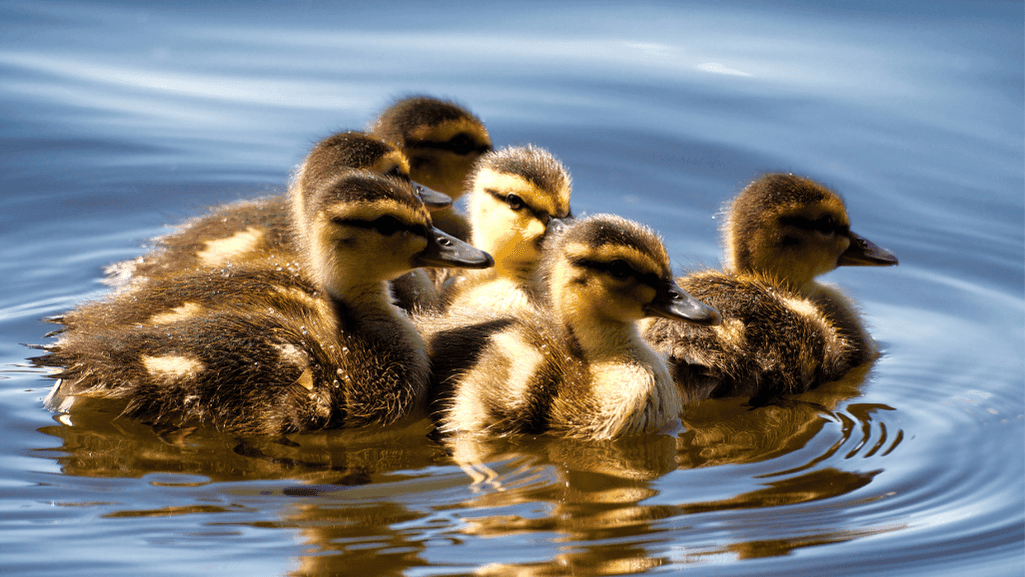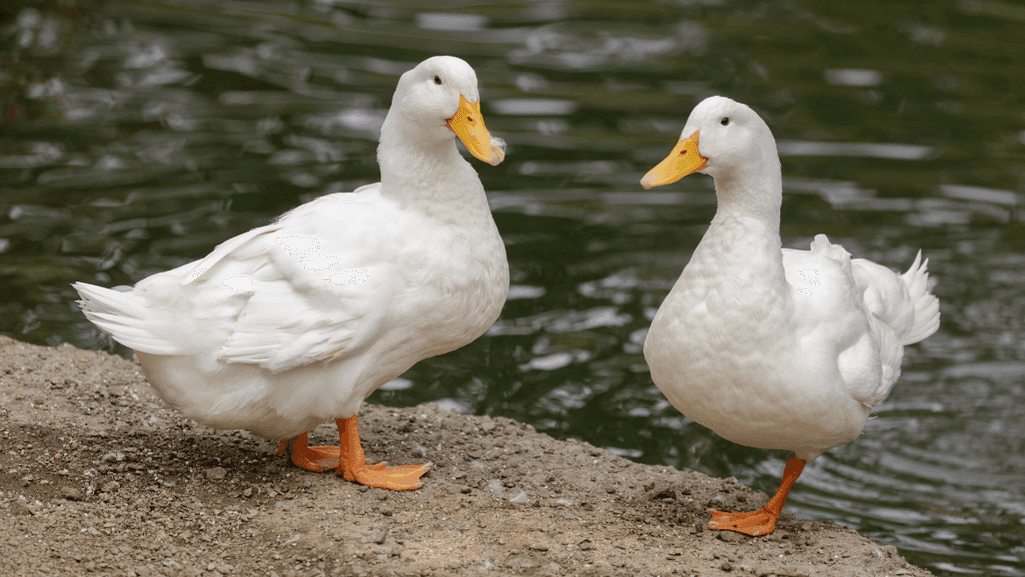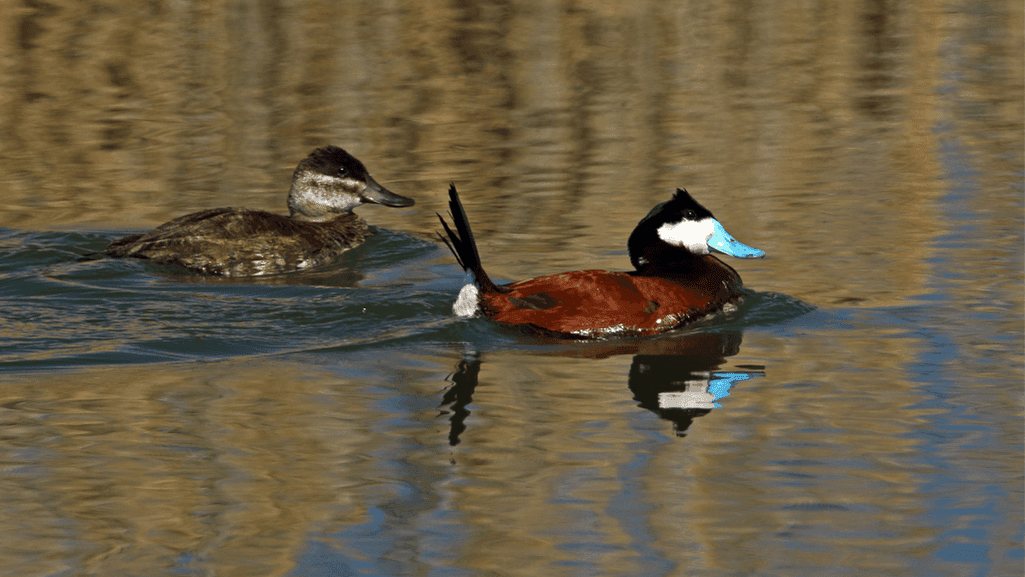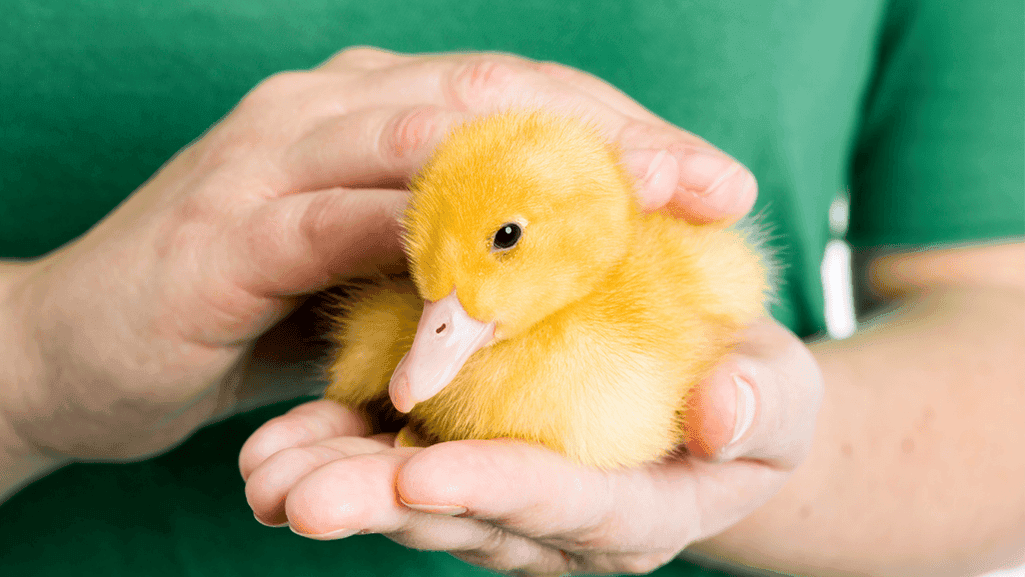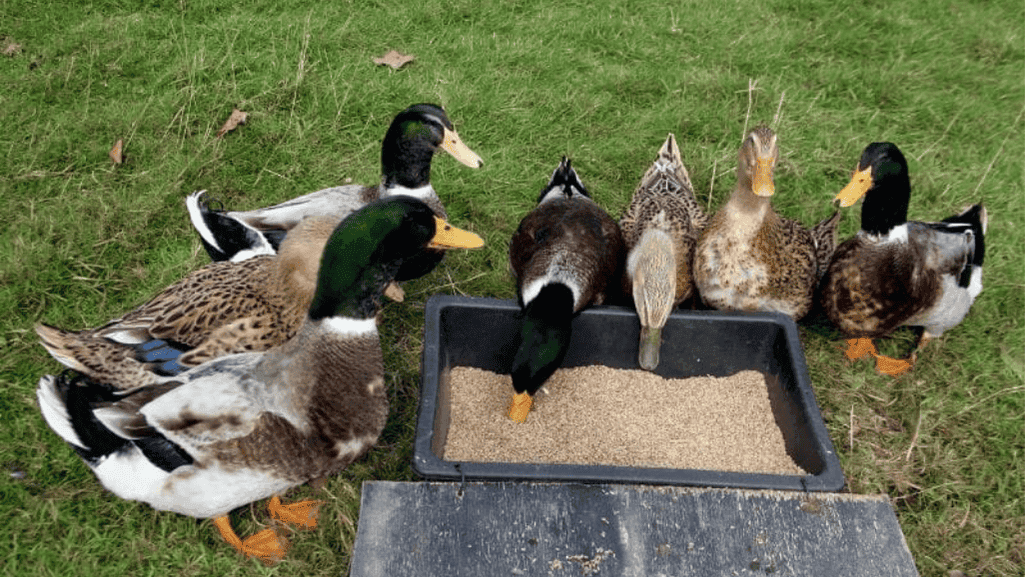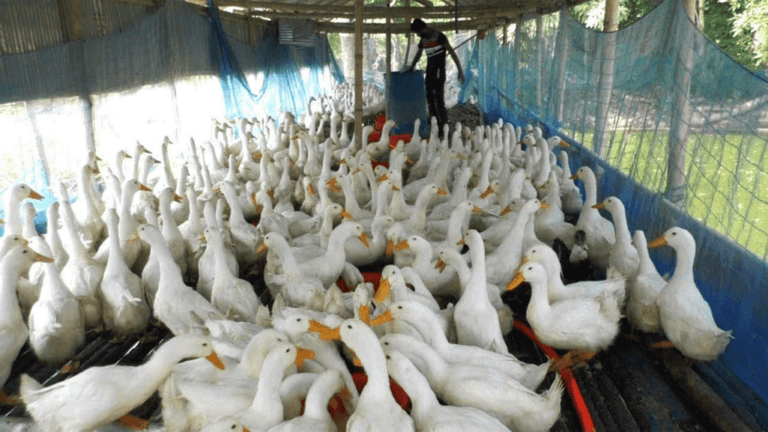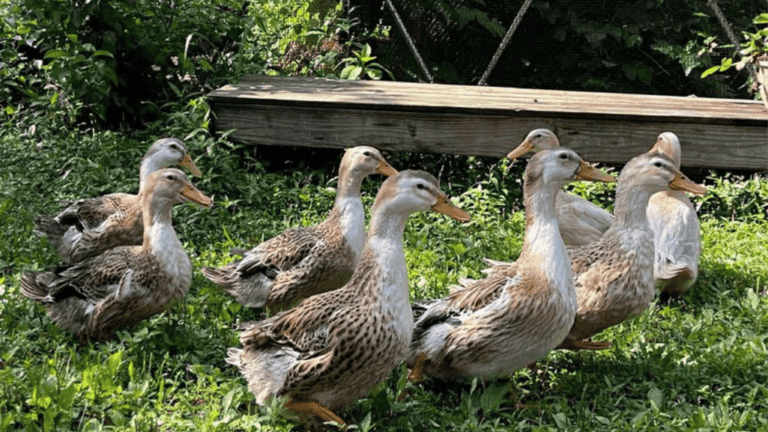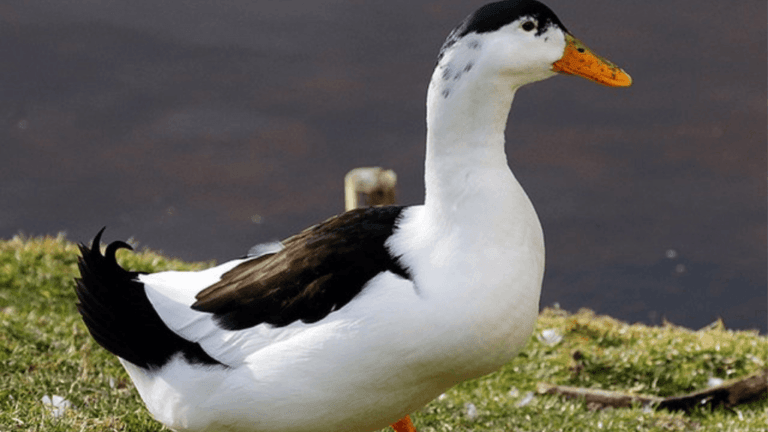Ducks add charm and practicality to any backyard or small farm. They are hardy, sociable, and easy to handle. They provide delicious eggs and meat. Choosing the right breed is key for a fun and successful experience with poultry breeds.
Each duck breed has its own traits. Some are great for laying eggs, while others are better for meat. Pekin ducks, for example, lay 200 to 300 eggs a year and weigh about 10 pounds when ready for slaughter. Muscovy ducks are mainly raised for meat, with males weighing over 12 pounds and laying 150 to 180 eggs a year.
For ornamental ducks, breeds like Indian Runner and Buff Orpington are excellent. Indian Runners lay 200 to 250 greenish eggs a year and have a unique posture. Buff Orpingtons lay 150 to 220 eggs annually and weigh 7 to 8 pounds. Other notable breeds include Mallards, Swedish Blue, Silver Appleyard, and Magpie ducks, each with their own special traits.
When picking a duckling breed, think about your climate, purpose, and available space. Knowing each breed’s unique qualities and your own needs will help you find the perfect match for your backyard duckling adventure.
Key Takeaways
- Ducks are hardy, sociable, and easy to handle, making them an excellent choice for backyard or small farm settings.
- Different duck breeds offer unique characteristics, such as egg-laying ability, meat quality, temperament, and adaptability.
- Popular domestic duck breeds include Pekin, Muscovy, Indian Runner, Buff Orpington, Mallard, Swedish Blue, Silver Appleyard, and Magpie ducks.
- When choosing a duckling breed, consider factors such as climate, purpose, and available space and resources.
- Understanding the traits of each breed and evaluating your circumstances will help you find the perfect match for your backyard duckling adventure.
Introduction to Duckling Breeds
Starting your duck-raising journey means picking the right duckling breed. There are many waterfowl varieties, each with special traits. It’s key to choose a breed that fits your goals and likes.
Duckling breeds vary in size, shape, and color. Some, like the American Pekin, are friendly and lay lots of eggs, up to 150 a year. Others, like the Khaki Campbell, can lay even more, up to 220 eggs a year.
Importance of Choosing the Right Breed
Picking the right duckling breed is vital for a good duck-raising experience. Think about egg production, meat quality, foraging, and temperament. For example, the Golden 300 Hybrid Duck is great for egg production, introduced in 1996.
Overview of Common Characteristics
Duckling breeds share some common traits. They are mainly divided into traditional and runner breeds. Knowing these differences helps you choose based on your needs.
Looking for breeds that are good at foraging or have unique looks? There’s a duckling breed for you. Learning about the different waterfowl varieties prepares you for a fun and rewarding duck-raising journey.
Top Duckling Breeds for Beginners
Choosing the right duck breed is key when you start raising ducks. Some breeds are perfect for beginners because they are hardy, adaptable, and friendly. Let’s look at some top duckling breeds great for new duck owners.
Pekin Ducks
Pekin ducks are popular for meat and eggs. They grow fast and have great meat quality. They can lay 130 to 200 eggs a year. These large, white ducks are easy to get along with and adapt well.
Khaki Campbell Ducks
Khaki Campbells are great for lots of eggs. They lay 180 to 300 eggs a year. Females lay 5-6 medium white eggs weekly. They are hardy and live 10 to 15 years, weighing 3.5 to 4.5 pounds.
“Khaki Campbells are the ultimate egg-laying machines, providing a steady supply of delicious eggs for your family.”
Runner Ducks
Runner ducks, like the Indian Runner, stand upright and forage well. They lay 100 to 180 eggs a year. They are perfect for free-ranging. Runner ducks come in many colors and patterns, making your flock look great.
Other breeds good for beginners include:
- Welsh Harlequin ducks, which lay up to 150 eggs per year
- Buff Orpington ducks, producing around 180 eggs annually
- Rouen ducks, laying between 140 to 180 eggs per year
When picking a duck breed, think about egg production, meat quality, and temperament. With the right care, these breeds will do well and make duck-raising fun and rewarding.
Unique Duckling Breeds to Consider
Popular breeds like Pekin and Khaki Campbell ducks are known for laying eggs and being friendly. But, there are many duck species with special qualities. These ornamental ducks and heritage duck breeds can make your flock more interesting.
Indian Runner Ducks
Indian Runner ducks stand out with their upright bodies and quick moves. They are great foragers and control pests in gardens. They lay a lot of eggs, up to 180 per year, with a high fertility rate.
The Blue Runner variety is very colorful, with 70% of their eggs being blue.
Muscovy Ducks
Muscovy ducks are not true ducks but are special in their own way. They are known for their tasty meat and large size. Males can weigh up to 13 pounds.
White Muscovy ducks are common and lay 100-150 eggs per year. They have a high fertility rate. Black Muscovy ducks are similar but come from South America.
Swedish Ducks
Swedish ducks, or Blue Swedish ducks, are admired for their blue color. They are hardy and good foragers. They provide meat and eggs.
Black Swedish ducks weigh 5-6.25 pounds and lay 130-180 eggs a year. They have an 85% fertility rate. This breed is important to preserve.
When choosing these unique duck breeds, make sure they fit your needs and goals. Adding these ornamental ducks and heritage duck breeds to your flock is rewarding. You’ll enjoy their beauty, productivity, and help preserve rare duck species.
Care and Management of Ducklings
Raising ducklings needs careful attention to their needs. A safe, clean space and the right food are key. This ensures they grow well and stay happy.
Housing Requirements for Ducklings
Choose a safe place for your ducklings to live. Options include homemade enclosures or bought ones like puppy playpens. Make sure the floor is smooth to avoid injuries as they grow.
Start with a rubber shelf liner to prevent Spraddle Leg. Later, add chopped straw or pine chips. But, avoid cedar bedding because it’s toxic.
Ducklings need enough space to move. Give them 0.5 square feet at first, then 1 square foot by 4 weeks. Keep their area clean by changing bedding often and placing waterers safely.
Feeding and Nutrition for Ducklings
Feed them un-medicated chick starter feed with brewers yeast for bone growth. At 3 weeks, switch to waterfowl starter feed. Then, use layer feed after 18 weeks. Add fresh greens and herbs as treats.
Use shallow dishes for feed and water. Ducklings drink a lot, almost half a gallon by 7 weeks. Always have good feed and fresh water available for their growth.
Maintaining Duckling Health
Keep ducklings warm, starting at 90°F and dropping 7 degrees each week. They need less heat than chicks. Watch for illness and get vet help quickly. Regular vet visits and a clean, dry home prevent sickness.
“Ducks drink and excrete more water compared to chickens, which necessitates extra measures to maintain dry litter floors.”
Good housing, food, and health care help ducklings grow into happy adult ducks. They will bring joy to your life for many years.
Factors to Consider When Choosing a Breed
Starting your backyard duck raising journey means picking the right breed is key. Many things to think about during duck breed selection help your ducks do well in their new home.
Climate and Environment
Your local weather is important for choosing duck breeds. For example, Muscovy ducks do well in warm weather. On the other hand, Saxony ducks are better in cold climates. Think about your area’s temperature and weather when picking a breed.
Purpose: Eggs, Meat, or Companionship
Different duck breeds are good for different things. If you want eggs, breeds like Khaki Campbell or Golden 300 Hybrid Layer are great. They can lay a lot of eggs. For meat, Pekin ducks are popular because they grow big.
If you want a duck as a friend, Saxony or Welsh Harlequin ducks are friendly and calm.
“Ducks are not only great egg layers and meat producers but also wonderful companions. Choosing a breed that aligns with your purpose ensures a fulfilling experience for both you and your ducks.”
Space and Resources Available
Before picking a duck breed, check how much space and resources you have. Ducks need about 4-6 square feet in their coop and 16 square feet outside. Some breeds, like Muscovy, need more room to forage.
Also, think about duck requirements for water. They need to be able to submerge their heads to stay healthy and happy.
By looking at climate, purpose, and space, you can pick the best duck breed for your backyard.
Conclusion: Finding the Best Duckling Breed for You
Choosing the right duckling breed is key to a great duck-raising experience. Think about egg production, fertility, weight, and special traits. This helps match your goals and resources with the best breed.
For example, White Layer Ducks are great for lots of eggs, up to 290 per year. Call Ducks are perfect for a small, friendly pet, weighing about 1.7 pounds.
Final Tips for New Duck Owners
Starting with a small flock is wise for new duck owners. Make sure to care for your ducklings well. Ducks have unique personalities and quirks.
Provide a good home, balanced food, and keep things clean. Ducks can be wonderful pets, for eggs, meat, or just for fun.
Resources for Further Learning
Looking to learn more about duck raising? Find reliable sources and talk to experienced duck owners. Online forums and local farming groups are great for advice.
Ask questions, share your experiences, and learn from others. Growing your knowledge of duck care helps your feathered friends thrive.
Choosing the right duckling breed is exciting. Think about your goals, resources, and preferences. Whether it’s Khaki Campbell or Muscovy Ducks, remember to care for them well.
Enjoy the journey of duck raising. Cherish the bond you’ll form with your feathered friends.


